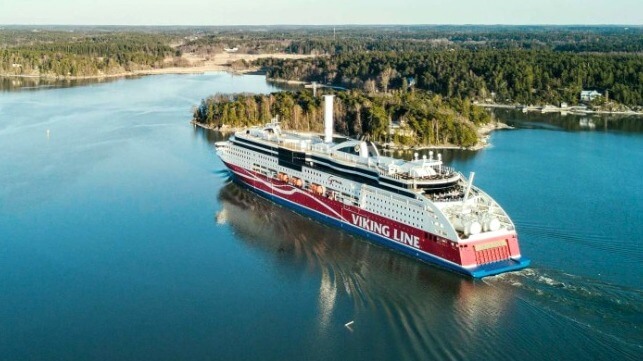Ship Upgrades and Operational Changes Cut Viking's CO2 by a Third

The maritime sector is looking for new ways to cut emissions to meet future climate targets, but Finnish cruise ferry operator Viking Line reports that it has already made a significant dent. Viking reports that it has cut its fleet's CO2 per mile by nearly a third over the span of the past 15 years, thanks in large part to investments in "the Baltic Sea’s most climate-smart vessels."
The reduction is nearly enough to meet the midterm IMO climate goal - to reduce carbon dioxide emissions from maritime transport by 40 per cent from 2008 levels by 2030.
In port, Viking's vessels have started to be supplied with green shore power. Fuel efficiency is now taken into account when Viking's timetables and routes are planned. But according to the company, the measures that have had the greatest impact are the $450 million investment in the LNG/rotor sail powered Viking Grace, which made its maiden voyage in 2013, and the slightly larger Viking Glory, which entered service in March.
“On board Viking Grace alone, the intelligent, need-based ventilation system saves the same amount of energy that all of our offices and warehouses use in one year. And that is just the case of a single technological innovation on one vessel," says Dani Lindberg, Viking's sustainability manager. "The Grace and Glory are already equipped to start using biogas or synthetic fuels produced from renewable energy when they become available in the future. That is the next big step towards carbon-neutral maritime traffic."

that matters most
Get the latest maritime news delivered to your inbox daily.
These carbon reductions will be helpful when the European Union's new maritime transport carbon emission rules begin to take effect. The European Parliament and European Council are negotiating the final legislative text of new regulations to bring maritime transport into the EU Emissions Trading System, with significant implications for shipping between EU ports. The final draft is expected as early as the fourth quarter of the year.
In addition, the arrival of the EEXI and CII energy efficiency regulations next year will require continual reductions in carbon intensity - much like the steps Viking has already taken over the past decade.
